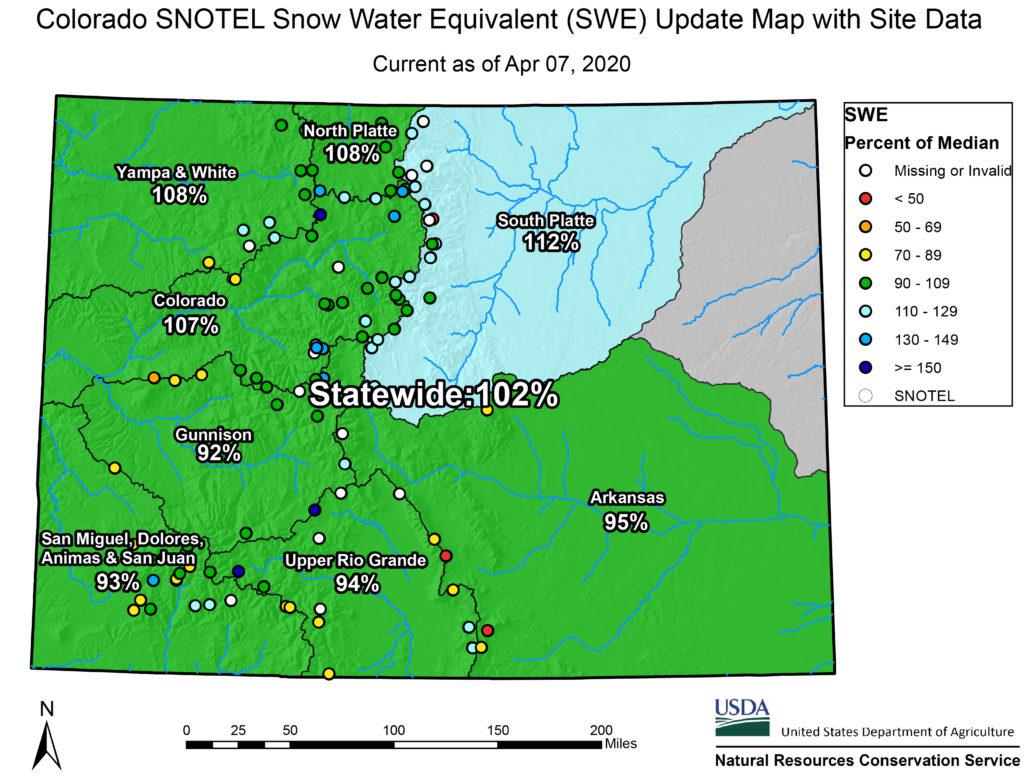Almost three weeks into spring and Colorado's snowpack is "in a good spot right now," said snow survey supervisor Brian Domonkos. Statewide, the snowpack is 102 percent of normal according to data from the Natural Resources Conservation Service.
Domonkos said this is the time of year when snowpack peaks in the southern mountains, which currently sits at about 93 percent of the season-to-date average.
The northern mountains are at 109 percent of normal, where snowpack can continue to accumulate for at least a few more weeks as winter conditions stick around. The Front Range's South Platte river basin is at 112 percent of normal, the highest of the state's eight basins.

Domonkos said this is good news since the majority of the water Coloradan's use comes from melting snowpack. Domonkos notes that the statewide precipitation is at 91 percent of the norm.
"We had a particularly dry fall through a few of the months in different locations," Domonkos said. "That will likely decrease the effects of the normal to above normal snowpack and the runoff numbers we'll see this spring."
To compensate for the discrepancies, streamflow forecasts are measured. Domonkos said things are more favorable in the northern half of the state, with the South Platte, Yampa White Green, North Platte and the Colorado basin forecast for 95 percent to 110 percent of normal streamflows. In the southern half of the state, the forecast ranges between 65 percent to 95 percent of normal.
Reservoirs are getting ready to collect the runoff, and statewide are 107 percent of average. Domonkos said reservoirs are in a good spot right now, but it's hard to say where they'll be in a few months. He might encourage southern reservoir managers to start collecting runoff earlier, where there are lower than normal streamflow forecasts.
"Whereas the reservoirs in the northern part of the state probably will let a fair amount of that water pass depending on the individual reservoir, filling up by that early summertime when the runoff starts to subside," Domonkos said.








